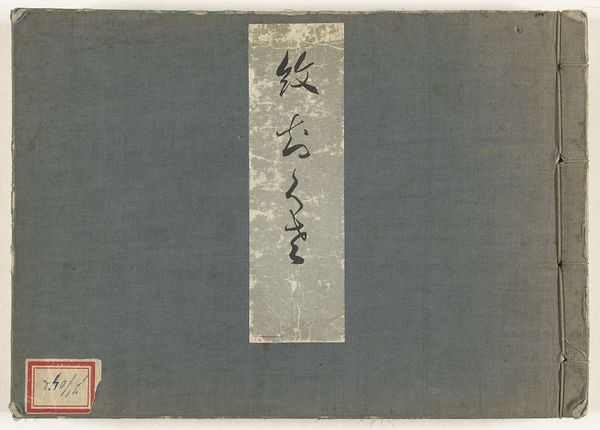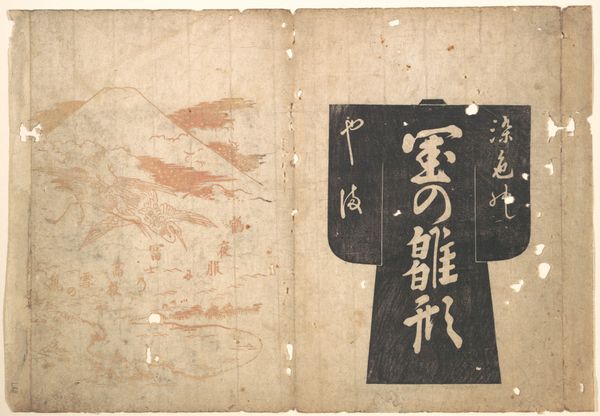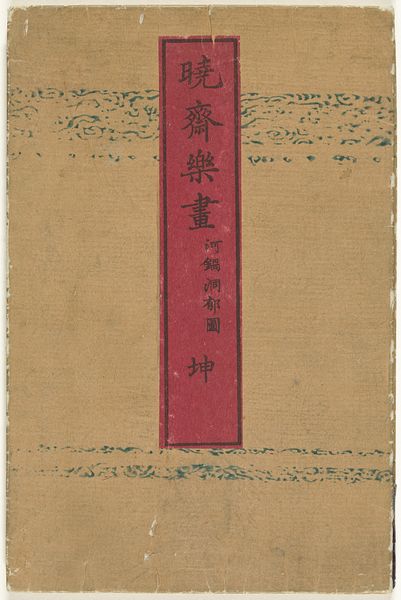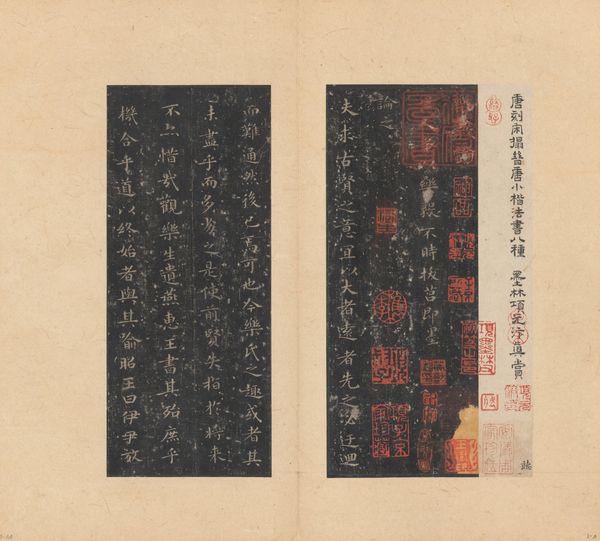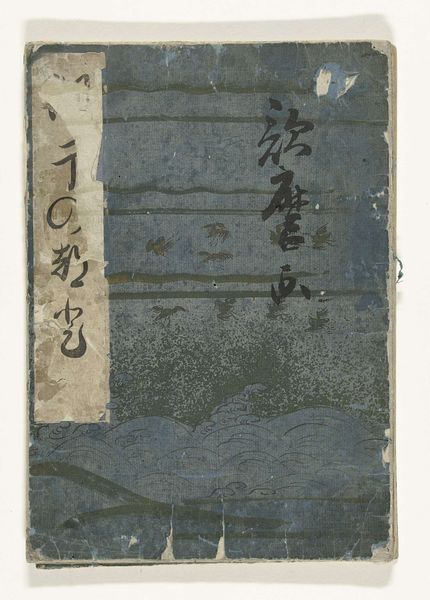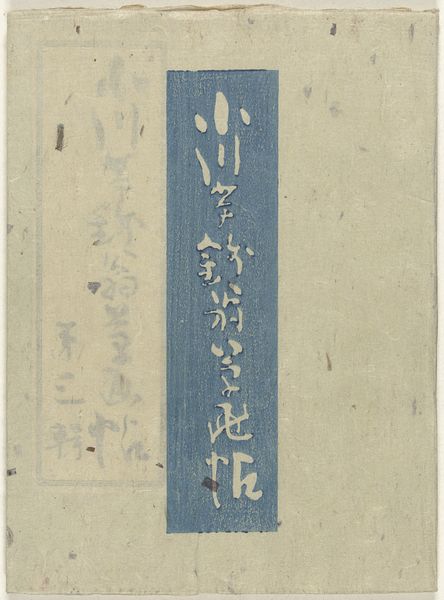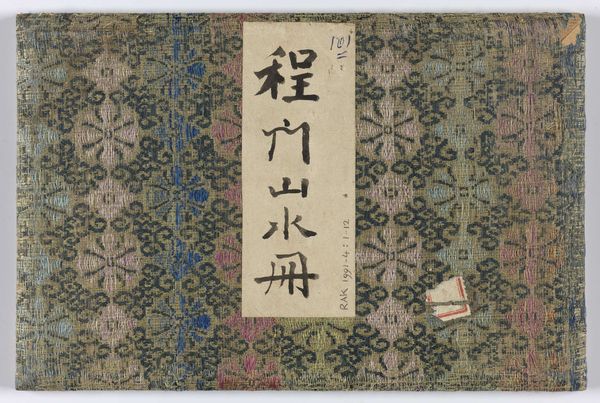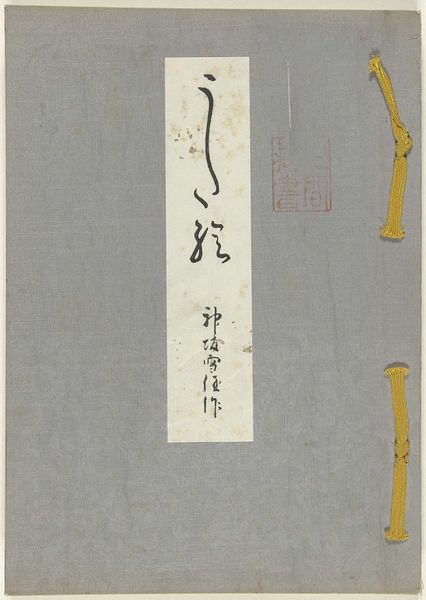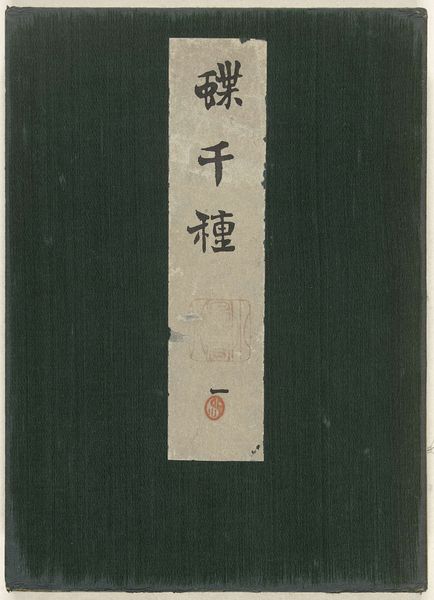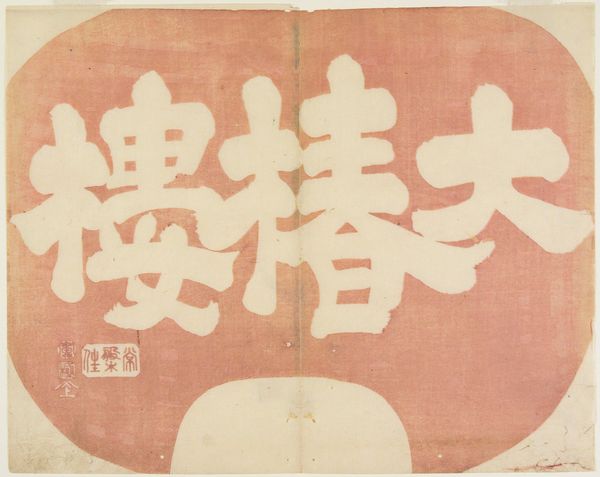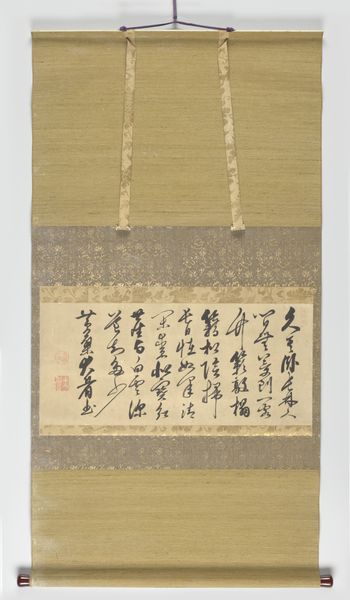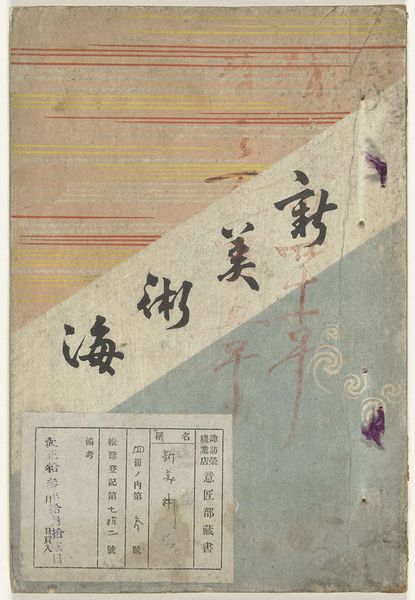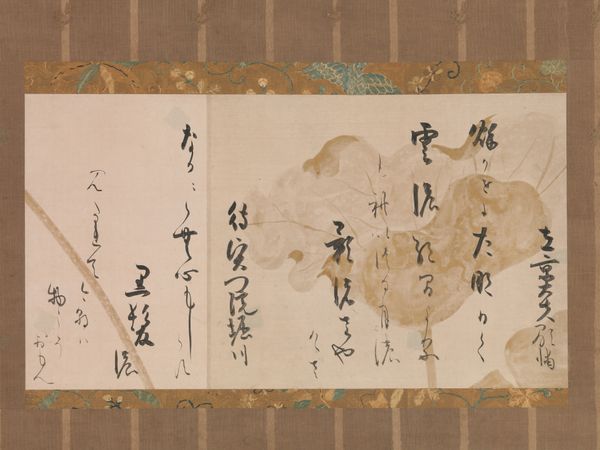
graphic-art, print, paper, woodblock-print
#
graphic-art
#
water colours
# print
#
book
#
asian-art
#
landscape
#
paper
#
woodblock-print
#
watercolour illustration
Dimensions: height 194 mm, width 263 mm
Copyright: Rijks Museum: Open Domain
Curator: This is "Prentenboek der Natuur," or "Picture Book of Nature," by Seizei Kigyoku, created between 1901 and 1904. It's a woodblock-printed book with watercolor illustrations, held here at the Rijksmuseum. Editor: It looks distressed, almost violently aged. There’s a darkness that gives it a solemn weight. Curator: Absolutely. The book’s darkened cover serves as a field for subtle textural nuances. Note the contrast between the block of text, its clear calligraphic strokes, and the surrounding almost amorphous designs of flora and fauna that frame it. The interplay between these controlled elements and the less defined ones draws the eye. Editor: The "distress" to me signals a violent encounter with time itself. In a sense, its state is part of its story, a quiet testament to how material objects carry histories of interaction and exposure, reflecting the shifting tides of access and neglect. Consider the cultural implications—who had access to it, and when was it deemed worthy, or unworthy, of preservation? Curator: Well, the materiality speaks to a particular aesthetic of wabi-sabi, an acceptance of transience and imperfection, so the weathering of the piece may be intentional or celebrated. However, viewing this work through a historical lens makes sense. The tension between its artistic intentions and cultural reception, raises important questions about the role of the artist in shaping historical narratives. Editor: The application of gold hints, as if to brighten some of the creatures on this book is visually compelling. Perhaps suggesting opulence, or possibly the high importance that the creatures held. What might this mean given the socio-political context? I wonder, how would this imagery function as an index of its time? What was nature meant to represent within Japanese society in the early 20th century? Curator: From a design point of view, its success comes through a careful orchestration of visual components. The use of line, color, and form constructs a coherent and engaging experience. But your points highlight the broader discourse it inevitably joins upon entering a collection like this one. It reminds us that it cannot be appreciated in a vacuum. Editor: So while this may be seen as a picture book, it is truly far more, a lens through which the human impact, intended and otherwise, plays out over time. Curator: Yes, an object of formal beauty which yields different insights across time and contexts.
Comments
No comments
Be the first to comment and join the conversation on the ultimate creative platform.
